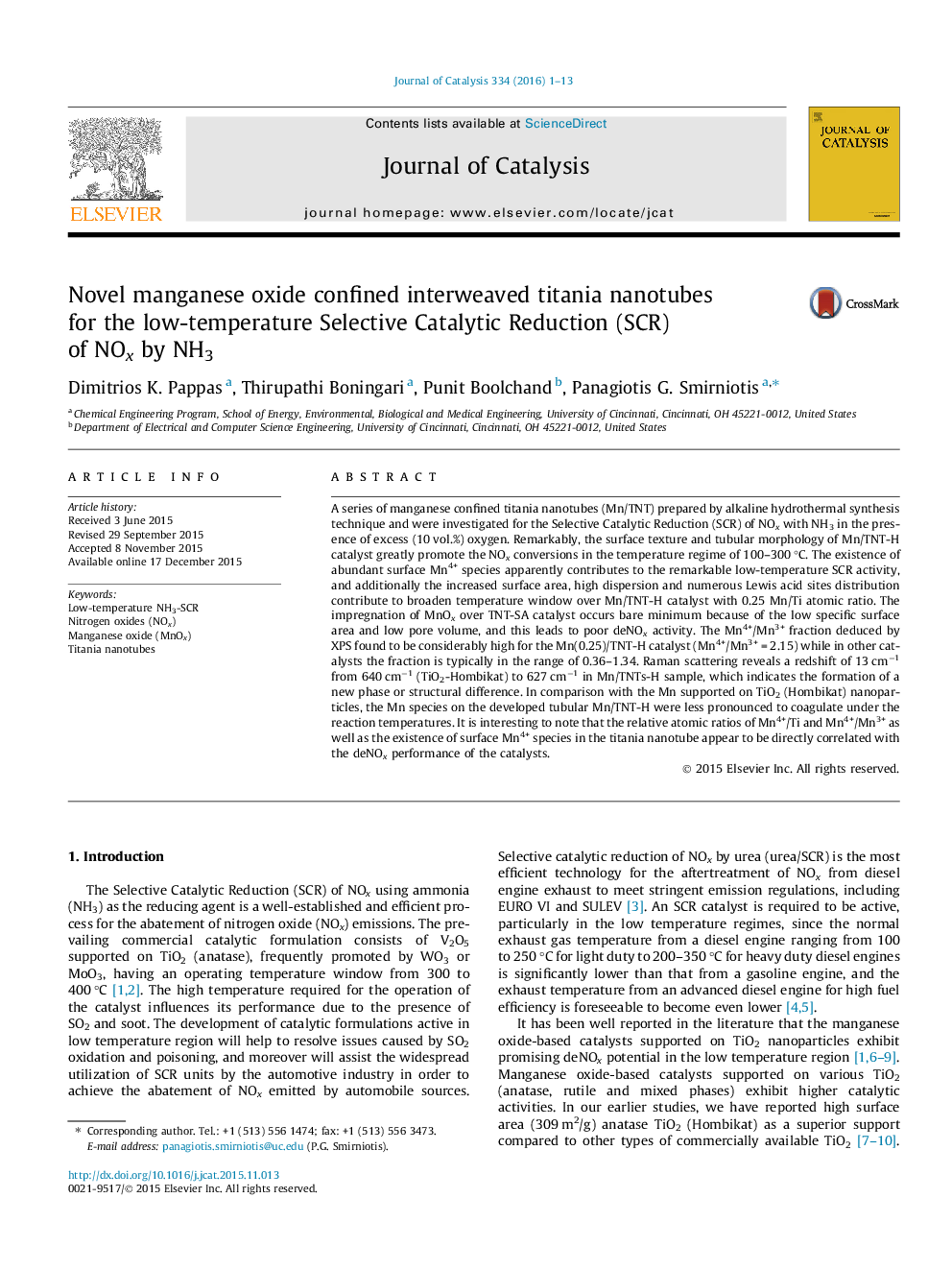| کد مقاله | کد نشریه | سال انتشار | مقاله انگلیسی | نسخه تمام متن |
|---|---|---|---|---|
| 60675 | 47542 | 2016 | 13 صفحه PDF | دانلود رایگان |

• Elevated surface titania nanotubes with surface area 421 m2/g used for SCR reaction.
• Achieved remarkable deNOx performance at low-temperatures.
• Key role of the surface texture, morphology to favor the formation of active sites.
• DeNOx efficiency is indeed correlated with the surface atomic concentrations.
• Tubular morphology established promotional effect.
A series of manganese confined titania nanotubes (Mn/TNT) prepared by alkaline hydrothermal synthesis technique and were investigated for the Selective Catalytic Reduction (SCR) of NOx with NH3 in the presence of excess (10 vol.%) oxygen. Remarkably, the surface texture and tubular morphology of Mn/TNT-H catalyst greatly promote the NOx conversions in the temperature regime of 100–300 °C. The existence of abundant surface Mn4+ species apparently contributes to the remarkable low-temperature SCR activity, and additionally the increased surface area, high dispersion and numerous Lewis acid sites distribution contribute to broaden temperature window over Mn/TNT-H catalyst with 0.25 Mn/Ti atomic ratio. The impregnation of MnOx over TNT-SA catalyst occurs bare minimum because of the low specific surface area and low pore volume, and this leads to poor deNOx activity. The Mn4+/Mn3+ fraction deduced by XPS found to be considerably high for the Mn(0.25)/TNT-H catalyst (Mn4+/Mn3+ = 2.15) while in other catalysts the fraction is typically in the range of 0.36–1.34. Raman scattering reveals a redshift of 13 cm−1 from 640 cm−1 (TiO2-Hombikat) to 627 cm−1 in Mn/TNTs-H sample, which indicates the formation of a new phase or structural difference. In comparison with the Mn supported on TiO2 (Hombikat) nanoparticles, the Mn species on the developed tubular Mn/TNT-H were less pronounced to coagulate under the reaction temperatures. It is interesting to note that the relative atomic ratios of Mn4+/Ti and Mn4+/Mn3+ as well as the existence of surface Mn4+ species in the titania nanotube appear to be directly correlated with the deNOx performance of the catalysts.
Figure optionsDownload high-quality image (76 K)Download as PowerPoint slide
Journal: Journal of Catalysis - Volume 334, February 2016, Pages 1–13